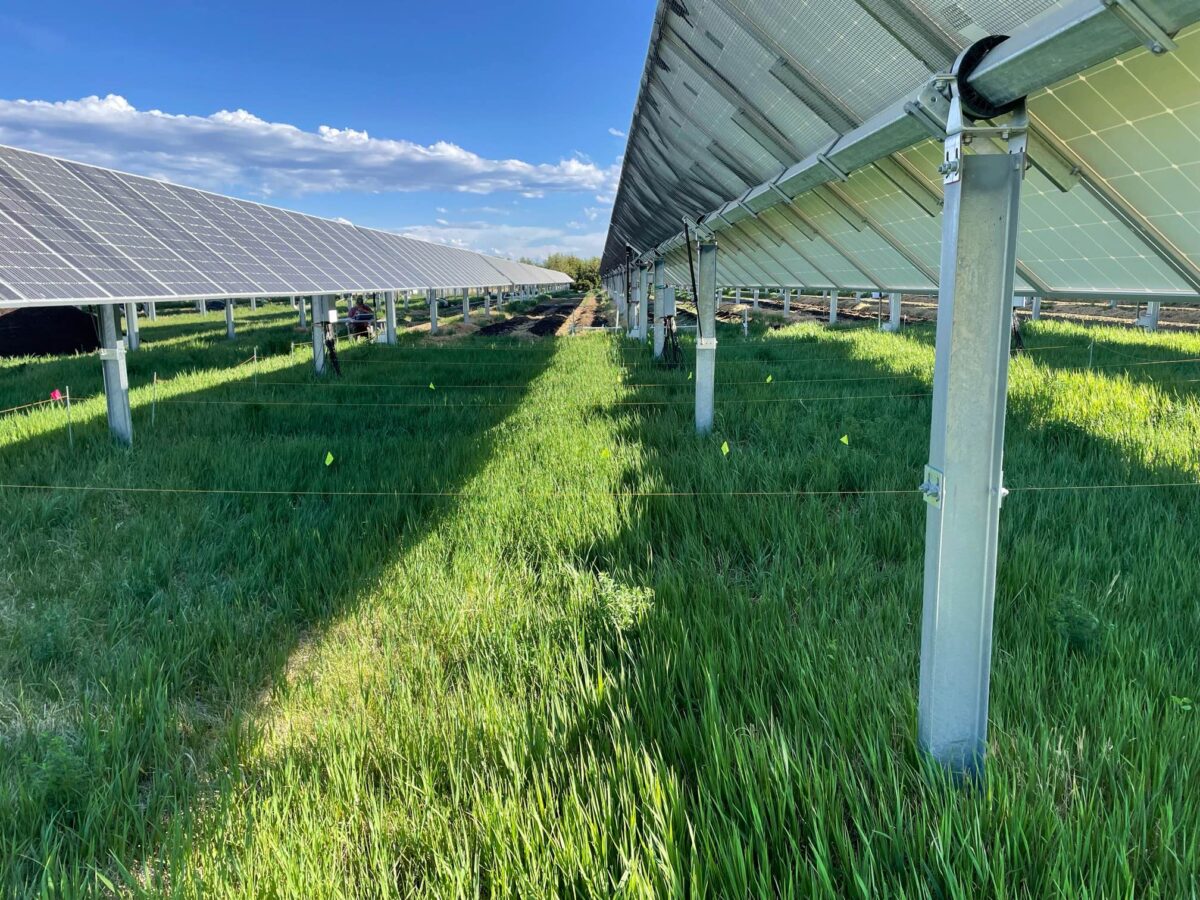Researchers at the Colorado State University in the United States have investigated the impact of an agrivoltaic system on semi-arid grassland previously managed for hay production. The team investigated, in particular, how grassland responded to different simulated grazing management strategies within the agrivoltaic array.
“This is the first study to test how forage quantity and quality respond to simulated grazing in the semi-arid climate of Colorado,” the research's corresponding author, Matthew Sturchio, told pv magazine. “The ability of plants to regrow at different stages of the growing season, when environmental conditions become hotter and drier, is important for determining best practices for grazing management in grassland agrivoltaic systems.”
The scientists took their measurements at the Jack’s Solar Garden (JSG), an elevated, south-oriented agrivoltaic learning and research facility using single-axis-tracking systems near Longmont, Colorado. They quantified how the timing of grazing alters overall productivity and if forage quality changes throughout the growing season.
Their analysis considered air temperature and relative humidity throughout the growing season from May to September 2022. These data were then used to calculate vapor pressure deficit (VPD), which is the difference between the amount of moisture that is actually in the air and the amount of moisture that air could hold at saturation.
The primary goal was to assess how PV panels altered patterns of forage production, which is technically known as aboveground net primary production (ANPP), and forage quality. “ANPP in grasslands is a valuable ecosystem service that is important for the economics of grazing as an agricultural land use,” the academics explained, noting that they compared the results of the simulated ungrazed grassland under the panels with an ungrazed reference area without PV modules.
The measurements showed that the agrivoltaic system did not have a significant impact on end of season ANPP totals in the absence of simulated grazing activity.
“More importantly, re-growth following simulated grazing led to equal or greater ANPP than in un-grazed sites at all microenvironment locations throughout the array,” the team said. “This finding indicates that a previously managed low diversity semi-arid grassland can maintain productivity within an agrivoltaic array and that the timing of grazing is unlikely to strongly affect total annual productivity.”
Overall, the results indicated that the forage quality in semi-arid regions may even be increased later into the growing season with grazing under solar panels.
The group introduced its findings in the study “Agrivoltaic arrays can maintain semi-arid grassland productivity and extend the seasonality of forage quality,” published in Applied Energy.
Another research group at the Colorado State University investigated last year how agrivoltaic systems mounted on single-axis trackers affect rainfall and light redistribution at a 1.2 MW installation on grassland in Boulder. This team believes that their understanding of the effects of single-axis agrivoltaic systems on rainfall and light redistribution and consequent impacts on crop productivity can help to restore land degraded by overgrazing, agriculture practice, and water scarcity.
This content is protected by copyright and may not be reused. If you want to cooperate with us and would like to reuse some of our content, please contact: editors@pv-magazine.com.




Found the article quite interesting.